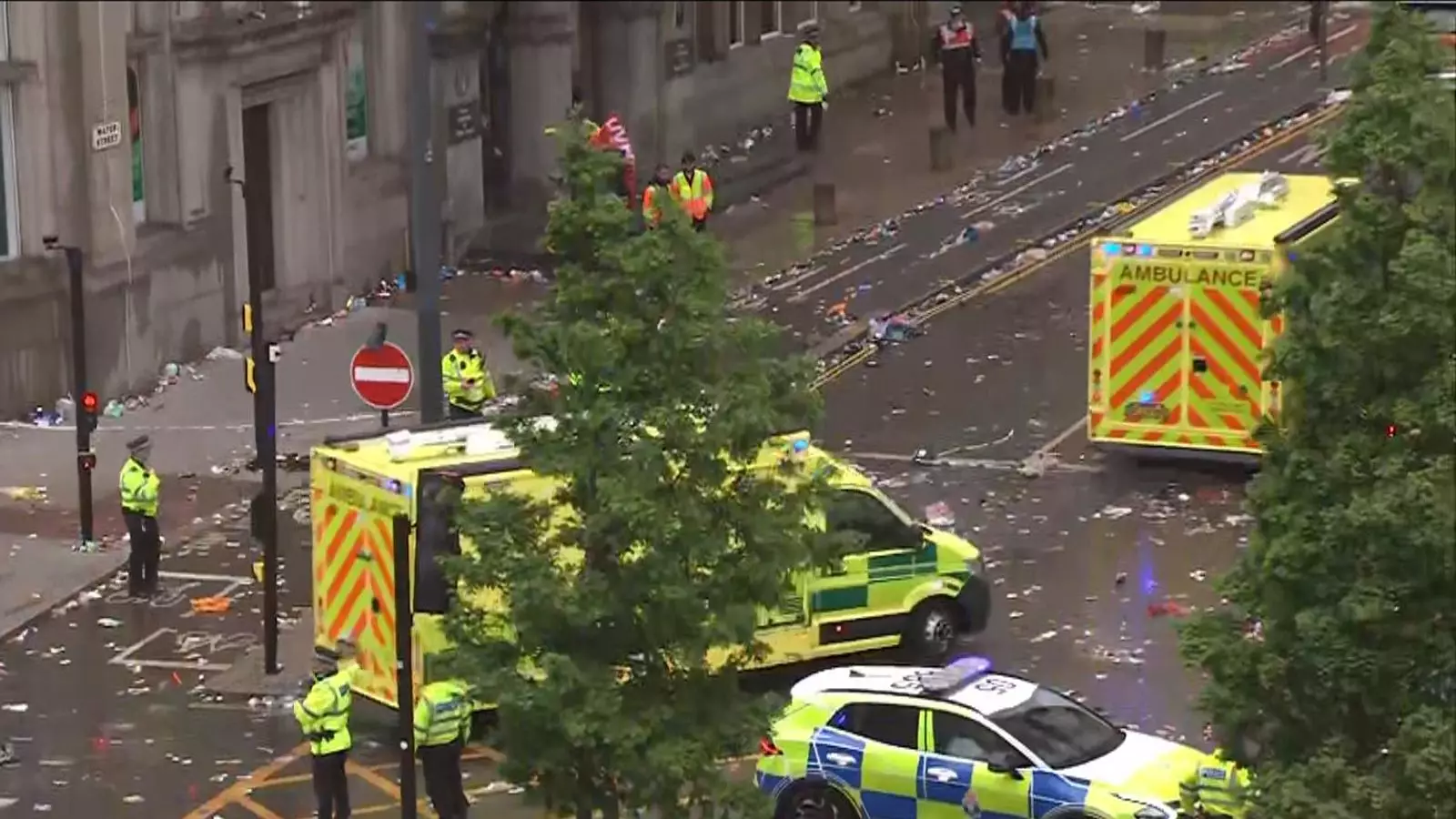In moments of collective joy, such as the celebration of Liverpool Football Club’s monumental Premier League victory, the atmosphere is typically charged with exhilaration and community spirit. However, the unspeakable incident that unfolded on Water Street revealed a dark underbelly to such jubilations—one that raises urgent questions about public safety and security protocols in high-traffic events. Thousands had gathered to honor their heroes, their cheers quickly drowned out by confusion and terror when a reckless car ran into pedestrians, transforming a parade into a scene of horror.
The juxtaposition of fans adorned in crimson, celebrating their beloved team, against the backdrop of sirens and chaos is nothing short of tragic. Eyewitness accounts, like those shared by Natasha Rinaldi and Harry Rashid, paint a picture not only of shock but also of the raw human instinct to protect one another in the face of danger. An openly joyful moment turned into a nightmare in seconds, challenging the notion of safety in public spaces. If this incident reveals anything, it’s that joy can be fleeting and vulnerability runs deeper than we often care to acknowledge.
Responsibility of the Authorities
What remains distressing is the apparent lack of thorough preventative measures during such a monumental celebration. The police response—though swift—only serves to highlight the failures that led to this incident in the first place. As Prime Minister Keir Starmer rightly pointed out, the scenes were “appalling”, yet the question lingers: why were adequate safety measures not in place to mitigate the risk of such an occurrence? Any responsible government must prioritize the safety of its citizens, particularly during events that are likely to draw large crowds.
When the joyous festivities culminate in devastation, the blame must lie not solely with the individual behind the wheel, but also with the overarching system designed to protect the public. In this moment of crisis, the police and emergency services were expected to act efficiently—an admirable goal, but a sobering reality check underscores the need for better risk management and crowd control systems. In the aftermath of such tragedies, society must reckon with the fact that danger often lurks in the shadows, waiting to exploit occasions meant for celebration.
The Aftermath: Community Resilience
In the wake of this harrowing experience, one cannot overlook the potential for resilience that communities often display in times of crisis. The stories emerging from the parade are not just of fear and chaos; they also encapsulate a collective willingness to stand together. Witnesses rushed to help those injured, illustrating a profound sense of solidarity that often arises in the face of adversity. The display of humanity serves as a reminder that while the act of one individual caused immense harm, it was the community that rallied to respond, affirming the innate bond that unites us.
Yet, within this narrative of resilience lies a troubling reality. For many, a joyful celebration may forever be tainted by the memory of discord, reminding us that joy and sorrow often dance on the same knife’s edge. It will take time for those directly affected to heal, but it is vital for the community to navigate these waters in unison. Solidarity must be met with action; calls for better security must not simply fade into the background as the headlines switch to the next sensational story.
Looking Forward: Preventing Future Tragedies
As discussions begin regarding the circumstances surrounding the incident, a culture of accountability must be cultivated. How can we ensure that future celebrations do not fall victim to similar tragedies? The government must take decisive action, potentially re-evaluating its approach to managing large events. Instead of merely reacting, it should anticipate threats, implementing systems that can adapt swiftly to potential dangers.
The reshaping of public safety protocols is not just a bureaucratic responsibility; it is a moral imperative. The legacy of Liverpool’s Premier League victory celebration should not be one marked by chaos and fear, but rather one that empowers and informs future celebratory gatherings. In honoring lives lost and lives forever altered, societies must emerge from the shadows of regret, taking proactive measures that prioritize community well-being above all else.


Leave a Reply